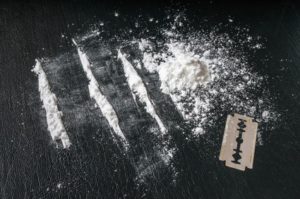
Get High and Kick Depression?
Two birds – one stone, right? If you’re in the practice of using ketamine to get high and kick depression at the same time, you better take a step back. Let’s talk about it.
The recent Time magazine article that touted ketamine as a hallucinogenic antidepressant highlighted the practice by some physicians of providing ketamine by intramuscular (IM) injection. The author described the “trip” a patient had to subject herself to for ketamine’s antidepressant benefits.
We decided to respond to that article, to show the psychiatrist-supervised perspective.
Ketamine IM Injections
The trouble with IM injections of ketamine is two-fold.
First, the bioavailability is inferior to intravenous infusions.
Second, and maybe more importantly, once the medication is injected into the muscle, any side effects can’t be stopped and treated. There’s nothing to do but wait it out. And patients can have risky, unpleasant experiences.
This just isn’t necessary. When carefully supervised IV infusions are used with precision of state-of-the-art infusion pumps, the treatment experience can be managed safely and efficiently — even pleasantly — for the patient.
Use of Ketamine Must Be Controlled and Precise
Ketamine has been used for 50 years by anesthesiologists under tightly-controlled conditions, with great success. Does that mean it should be for sale on the drugstore shelf? With maybe a little dosing cup for dosing at the consumer’s discretion…? Certainly not.
Yes, ketamine is used on the street for its dissociative properties, but at great risk and personal cost to the user.  Serious risk, addiction, and terrifying side effects are not only possible but not uncommon in people who use ketamine excessively, and illegally.
Serious risk, addiction, and terrifying side effects are not only possible but not uncommon in people who use ketamine excessively, and illegally.
For 20 years, psychiatrists have been hearing from patients who used ketamine to get high, at frighteningly high doses — that they thought it helped their depression.
And these doctors cautioned their patients about using any drug without physician supervision. Because of the dangers of overdose, addiction, or side effects that can be dangerous at high doses.
Now we’re all hearing from psychiatrists who warned their patients against using ketamine unsupervised for the “trip.” Those same doctors are wishing they’d listened more closely, and pursued more study about the reasons their patients described ketamine this way.
And … at the same time, we’re hearing of the consequences street users have suffered from ingesting extremely high amounts of ketamine, and the damage they’ve suffered.
Get High and Kick Depression? Better Rethink That.
Let me tell you about an article I ran across last week. It was published in Vice, September 29, 2017, and entitled, “What It’s Like to Self-Administer Ketamine for Depression.” I can imagine the idea of figuratively watching someone abuse ketamine to self-medicate sounds appealing to some readers.
It actually showcases one user’s (known as “Jack”) experience who buys ketamine on the street, and “self-doses” to treat his  depression.
depression.
This young man describes his on-again off-again bouts with depression … that turned vicious when he dropped out of graduate school.
He invites a journalist to observe him taking ketamine and his response during and afterward. As you read the article, you’ll see blatant examples of the dangers that go with leaving it to the recipient to determine dosage.
It’s Not the Ketamine That’s Costly – It’s Doing It Right that Costs Money
And you can’t do it right without physician supervision. Certainly not on the street, or with a pile of powder on your coffee table.
The author of the article points out that uncontrolled ketamine purchased on the street is a great deal less expensive than treatment provided by medical doctors. As we’ve talked about before, that’s not surprising, since doctors have to invest in costly equipment and specialized staff to properly monitor each patient and supervise and respond to side effects and reactions appropriately.
I can see how anyone suffering with treatment-resistant depression who doesn’t have the funds for ketamine treatment would seek alternate ways to access much needed help. I get it. But, the answer is not to risk self-destruction by using it without professional guidance.
This article showed that Jack not only began with a much higher than recommended initial dose, but once the experience subsided, he snorted more and more until all he had was gone.
This is the Best Method documented for achieving addiction status, and is verified by hordes of addicts as the Short Cut to Serious Side Effects. The more you take the more you want. The more you indulge the more damage you suffer. 
Overuse of Controlled Drugs
Have you ever suffered with serious pain? If you were in the hospital, they might have given you IV morphine. It can really help pain.
But if you stay in the hospital, and they continue to give you morphine every 2 hours for 3 weeks … you know what will happen, right?
The morphine doesn’t seem as effective as it did at first, and you find you need more of it more often to get the same relief. This is true with a majority of controlled drugs. And this is how addiction begins.
With medical supervision, the hospital may provide a week or so of morphine, then they may change to a different medication to prevent addiction. And a medically supervised dose of ketamine is minuscule in comparison to the amount our friend Jack used.
Self-Prescribing Leads to Over-Indulging
The author of the article made the statement that maintenance doses are needed every 2-4 weeks. This is certainly possible for some individuals, but it’s not the norm. If someone needs a maintenance or booster dose at all, they’re more likely to need it between 2-6 months. But, they may not need it at all.
Over-indulging leads to irreversible damage.
Still, when you consider that the author’s source for this information may have been Jack, you easily guess he’s probably ingesting — or snorting — huge amounts of a controlled substance and way too often. A substance that can do great harm if use exceeds therapeutic doses.
Like damage to the bladder … that causes excruciating pain, bleeding ulcers on its lining, and fibrosis — or hardening — of the bladder walls. Once that happens, the bladder can’t be repaired. And at your young age you have to wear a diaper the rest of your life, or a catheter. Then, it can lead to kidney failure … and you can’t live very long without your kidneys.
We Can’t Trust Ourselves When We’re Medicated
Back to the drugstore: you don’t find morphine on the drugstore shelf with a syringe included for dosing at home, for the same reason you don’t find ketamine there. Because left to their own devices, many people will follow “what feels good.” And if a little bit does a little bit of good, then it stands to reason that a whole lot will do a whole lot of good.
But as fun as that may sound, when it comes to controlled substances, it’s a dangerous myth.
Most of us believe we’d use a medication like this only according to instructions. And some would. But, what we’d never do with a clear mind, we just might do when we’re not ourselves. When we’re under the effects of a dissociative drug.
You can see why the government must control medications like this. Because a clear-headed doctor must decide the dosage and delivery for a drug that can be harmful if misused. A drug like ketamine can impair a patient’s reasoning power, and he or she will easily use too much.
Sometimes going the cheapest route may seem like a solution when you’re in pain. I really get that. But taking that direction can cost you your life.
Use Medications WITH MEDICAL SUPERVISION… Or Else.
Our friend Jack has an uncertain future. His heavy and frequent use of ketamine in massive doses to treat his  depression is giving him periods of relief from the suffering of depression, but it’s slowly eroding his life at the same time. He doesn’t know at what point this self-treatment will backfire. But once it does, he won’t escape the consequences.
depression is giving him periods of relief from the suffering of depression, but it’s slowly eroding his life at the same time. He doesn’t know at what point this self-treatment will backfire. But once it does, he won’t escape the consequences.
Don’t blame the messenger.
With all this said, the problem isn’t with ketamine. Ketamine is a powerful drug that’s restoring lives every day in psychiatry. When lay people take ketamine into their own hands and and use it casually at home, tragedies happen.
Medical doctors educate and train in the intricacies of the human body – its reactions, responses, toxicities. Scientists create a powerful medication like ketamine to be offered by these professionals to relieve suffering in their patients.
Ketamine Can Work Miracles When Used Properly
In my practice, we take every precaution and precisely dose each patient to achieve the best possible response, without any of these risks. At Innovative Psychiatry, we continue to document a strong positive response in 80% of our patients with treatment-resistant depression. And because of the precision and safety measures we use, we don’t see the serious side effects ketamine addicts see every day.
Ketamine treatment is the most extraordinary medication for treating severe depression and suicidal thoughts  available today. If you’ve suffered long, and have tried other antidepressants without real improvement, call us. We’re leading a paradigm shift in psychiatric treatment.
available today. If you’ve suffered long, and have tried other antidepressants without real improvement, call us. We’re leading a paradigm shift in psychiatric treatment.
While ketamine isn’t for everyone, with an 80% success rate, it may be just what you need to feel yourself again. To have the freedom to live again, enjoy relationships, and restore what’s most important to you.
Call us, and schedule an appointment. Let’s work together to get your life back on track. Safely.
To the restoration of your very best self,
Lori Calabrese, M.D.
